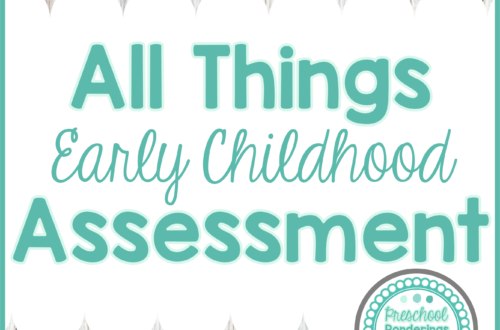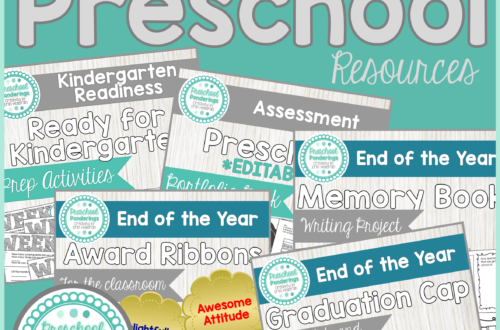Preschool assessments are different than the types of assessments we tend to see in elementary classrooms. They don’t require testing the children in the traditional sense, because we don’t expect our preschoolers to be able to sit down and answer multiple choice questions. There are other ways of determining what preschoolers know, and which skills they have mastered. These other strategies always produce evidence that we can use to support our total picture of a particular child.
So what exactly does this evidence look like? It can take a variety of different forms, including;
- Artwork that children have created
- Photos of children participating in class activities
- Writing samples
- Cutting samples
- Quotes from the children
- Anecdotal notes
- Video or Audio recordings
Each of these can tell us a lot about the children we are working with.
Artwork is a visual representation of a child’s thoughts. It can provide insight into what children understand, as well as their creative imaginations. Artwork can also give us clues to other developmental domains – how well the child can use a pencil or crayon (the pressure exerted, how steady the lines are, etc.), their problem solving skills (how they were able to get 3D objects to stick together, or what they did when they ran out of the color paint they needed), and how well they are able to focus on one project (is their artwork very detailed, or was it finished in a hurry?).
Photos of children show their facial expressions as they are participating, they also give us the opportunity to examine skills that we may not notice during the actual activity (how the child is holding the pencil, if they are sitting in the chair correctly, etc.). Photographs also give us evidence about the child’s social emotional skills, for example, is the child standing in the middle of the group or off to the side? Are they working with the other children or are they working alone?
Writing samples not only show the child’s writing abilities, but additional skills that play a role in successful writing. Does the sample show a lot of writing, or is the page mostly empty? This lets us know about the child’s ability to focus, as well as their frustration tolerance. You can also see what level the child’s fine motor skills are at by studying the lines that they’ve made. The same can be said for cutting samples, which show you how much focus and control the child has while using the scissors.
Quotes from the children are one of my favorite types of evidence, because they help us understand exactly how the children are processing information. They help us to see what stands out as the most important aspects of the activity or the child’s day and what concepts they don’t quite understand yet.
Anecdotal notes may be the easiest form of evidence to collect – simply taking notes on what the children do while they are in the classroom. In order for these to be valuable they must be written in a way that lets the reader know exactly what has happened without passing any judgement. They should not be an interpretation of the child’s actions, but rather a transcript.
Recordings can be among the most difficult to capture and store, but they give us the opportunity to hear the child’s voice and/or see their movements. This allows us to evaluate gross motor and language skills in ways that other types of evidence cannot.
I’ll be discussing more aspects of preschool assessments all week, so make sure to check back often. In the mean time you can find more information in these posts.



